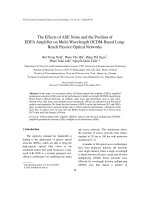The effects of planning with writing on the fluency, complexity, and accuracy of l2 oral narratives
Bạn đang xem bản rút gọn của tài liệu. Xem và tải ngay bản đầy đủ của tài liệu tại đây (1.23 MB, 138 trang )
THE EFFECTS OF PLANNING WITH WRITING
ON THE FLUENCY, COMPLEXITY, AND ACCURACY
OF L2 ORAL NARRATIVES
By
Hiep Thien Chau
A DISSERTATION
Submitted to
Michigan State University
in partial fulfillment of the requirements
for the degree of
Second Language Studies – Doctor of Philosophy
2014
UMI Number: 3645908
All rights reserved
INFORMATION TO ALL USERS
The quality of this reproduction is dependent upon the quality of the copy submitted.
In the unlikely event that the author did not send a complete manuscript
and there are missing pages, these will be noted. Also, if material had to be removed,
a note will indicate the deletion.
UMI 3645908
Published by ProQuest LLC (2014). Copyright in the Dissertation held by the Author.
Microform Edition © ProQuest LLC.
All rights reserved. This work is protected against
unauthorized copying under Title 17, United States Code
ProQuest LLC.
789 East Eisenhower Parkway
P.O. Box 1346
Ann Arbor, MI 48106 - 1346
ABSTRACT
THE EFFECTS OF PLANNING WITH WRITING
ON THE FLUENCY, COMPLEXITY, AND ACCURACY OF L2 ORAL NARRATIVES
By
Hiep Thien Chau
This study is aimed to investigate whether planning with writing enhances the fluency,
complexity, and accuracy of L2 oral narratives. Three groups of intermediate EFL learners at a
university in Vietnam with 30 participants in each performed a picture-based narrative under one
of the conditions: no planning, planning without writing (rehearsal), and planning with writing.
Given 10 minutes of planning, the planning-without-writing group were told to rehearse their
performance while the planning-with-writing group were told to write out the narrative in full
sentences. A post-task interview was also conducted to probe what participants chose to attend to
while planning.
All the oral performances were transcribed and analyzed using a comprehensive set of
measures for fluency, complexity, and accuracy. One-way ANOVA results showed that both
rehearsal and writing before speaking had significant effects on all the three aspects of oral
production, but there was no significant difference between planning with and without writing.
The rehearsals and written narratives during planning, which were analyzed and triangulated
with the interview data, also revealed that both planning groups, in general, had similar patterns
of planning with lexical search taking most of their time. The planning-with-writing group
tended to focus more on form than the planning-without-writing group.
The evidence from this study furthers our understanding of the effect of planning on oral
task-based performance and supports a comprehensive approach to detecting the planning effect
using both general and specific measures. The findings also inform L2 researchers and teachers
of the relationship between writing and speaking in L2 development.
To my mother and Chris
iv
ACKNOWLEDGEMENTS
I owe my sincere gratitude to many people for their assistance of various kinds with this
project.
First and foremost, I would like to extend special thanks to my chair, Dr. Charlene Polio,
for her inspiring me with the dissertation topic and patiently guiding me through the process of
conducting the study. I would like to thank my committee members, Dr. Debra Hardison, Dr.
Susan Gass, and Dr. Aline Godfroid, for their thought-provoking comments that enlightened me
in many aspects.
I would like to thank Dr. Rebecca Foote, Dr. Shawn Loewen, and Dr. Debra Friedman for
their wholehearted instruction during the first hard years of my life as a Ph.D. student. Their
lessons about quantitative and qualitative research are of great help not only to my dissertation
but also to my research life later.
I am eternally grateful to Dr. Christopher Wheeler, Dr. Karen Klomparens, Dr. Jeffrey
Riedinger, and Dr. Janet Swenson, who invested time and effort in bringing me to Michigan
State University and helping me with the assistantships as well as fellowships. Without their
generous support, I would not have been able to go this far.
No word can express my thanks to Dr. Phu Nguyen for everything he did for me as a
wise mentor, a dear uncle, and a close friend.
I will not allow myself to forget my honest and helpful friends at Michigan State
University. They are Scott Chiu, Ching-Ni Hsieh, Amy Thompson, Luke Plonsky, Maren
Schierloh, Minh Duong, Yen Duong, Ngoc Lan Dang, Thanh Ha Nguyen, Uthane Supatti, and
many others. They were always willing to share with me many things from useful readings and
research experiences to funny stories and even unbearable frustrations.
v
I am also indebted to all of my colleagues and students at Cantho University for their
willingness to assist in recruiting the participants and collecting data for my research. I wish I
could hug each of them and tell them how much their help meant to me.
Finally, without the love of my wife Bao Dien and two sons Tuc and Khiet, I could not
have had enough stamina to complete this dissertation.
vi
TABLE OF CONTENTS
LIST OF TABLES ..........................................................................................................................x
LIST OF FIGURES ...................................................................................................................... xi
CHAPTER 1: INTRODUCTION ...................................................................................................1
CHAPTER 2: LITERATURE REVIEW ........................................................................................6
Models of first and second language speech production ....................................................6
Measuring language production ..........................................................................................8
Planning research and issues .............................................................................................10
Trade-off effects ................................................................................................................13
Task complexity ................................................................................................................14
Guided planning ................................................................................................................15
Planning with writing ........................................................................................................17
The present study: Research questions and hypotheses ....................................................20
CHAPTER 3: METHODOLOGY ................................................................................................23
Research design ................................................................................................................23
Participants ........................................................................................................................23
Materials ...........................................................................................................................25
Pretests ..................................................................................................................25
Oral task ................................................................................................................27
No planning (NP) ......................................................................................29
Planning without writing (P-W) ................................................................29
Planning with writing (P+W) ....................................................................29
Interview ................................................................................................................30
Procedure ..........................................................................................................................30
Measures ...........................................................................................................................33
Fluency measures ..................................................................................................33
Speed fluency ............................................................................................33
Breakdown fluency ...................................................................................34
Repair fluency ...........................................................................................34
Complexity measures ............................................................................................35
Overall complexity ....................................................................................35
Phrasal complexity ....................................................................................35
Subordination ............................................................................................36
Structural variety .......................................................................................36
Lexical variety ..........................................................................................36
Lexical density ..........................................................................................37
Accuracy measures ...............................................................................................37
Errors per 100 words .................................................................................37
Correct verb forms ....................................................................................37
Target-like use (TLU) of articles ..............................................................38
vii
Target-like use of the plural -s ..................................................................38
Lexical errors ............................................................................................38
Analysis .............................................................................................................................39
Analysis of pretests ...............................................................................................39
Transcribing oral performances, rehearsals, and interviews .................................39
Analysis of oral performances ..............................................................................40
Analysis of planning data ......................................................................................43
Analysis of interview data ....................................................................................44
CHAPTER 4: RESULTS ..............................................................................................................45
RQ 1: What effects does planning with and without writing have on the fluency of an L2
oral narrative? ...................................................................................................................45
Speed Fluency .......................................................................................................45
Breakdown Fluency ..............................................................................................46
Repair Fluency ......................................................................................................50
RQ 2: What effects does planning with and without writing have on the complexity of an
L2 oral narrative? ..............................................................................................................53
RQ 3: What effects does planning with and without writing have on the accuracy of an
L2 oral narrative? ..............................................................................................................57
RQ 4: What do learners attend to during planning? .........................................................60
Results from analysis of self-repairs in the planning data ....................................61
Results from qualitative analysis of the interview data ........................................62
Interview question 1: “What were you thinking about while planning?” .63
Attention to content .......................................................................64
Attention to vocabulary .................................................................65
Attention to grammar ....................................................................65
Attention to pronunciation ............................................................66
Interview question 2: “What were you most concerned about during
planning?” .................................................................................................68
Interview question 3: “Do you think you performed the oral task
successfully?” ...........................................................................................69
Interview question 4: “Could you use what you had planned in your
narrative?” .................................................................................................72
Interview question 5: “What are the benefits of the type of planning you
experienced?” ............................................................................................74
Interview question 6: “If you are allowed some time to plan for another
similar oral task in the future, how would you choose to plan your
speaking?” .................................................................................................77
Results from qualitative analysis of the four special cases ...................................78
CHAPTER 5: DISCUSSION AND CONCLUSION ...................................................................86
RQ 1: What effects does planning with and without writing have on the fluency of an L2
oral narrative? ...................................................................................................................86
RQ 2: What effects does planning with and without writing have on the complexity of an
L2 oral narrative? ..............................................................................................................88
viii
RQ3: What effects does planning with and without writing have on the accuracy of an L2
oral narrative? ...................................................................................................................90
RQ4: What do learners attend to during planning? ..........................................................91
Limitations of the study and suggestions for future research ...........................................93
Contributions of the study .................................................................................................94
APPENDICES ..............................................................................................................................96
Appendix A: Grammar pretest ..........................................................................................97
Appendix B: Pronunciation pretest .................................................................................104
Appendix C: The picture set for the task ........................................................................105
Appendix D: Task instructions in English and in Vietnamese .......................................106
Appendix E: Interview questions ....................................................................................109
Appendix F: Coding guidelines for fluency measures ....................................................110
Appendix G: Coding guidelines for complexity measures .............................................111
Appendix H: Coding guidelines for accuracy measures .................................................112
Appendix I: Data samples ...............................................................................................116
Appendix J: Inter-rater reliability ...................................................................................118
REFERENCES ...........................................................................................................................119
ix
LIST OF TABLES
Table 1: Distribution of participants by gender across three groups ............................................24
Table 2: Descriptive statistics for pronunciation and grammar pretest scores by group ..............26
Table 3: Descriptive statistics for speed fluency measure ............................................................45
Table 4: One-way ANOVA results for speed fluency measure ....................................................46
Table 5: Descriptive statistics for breakdown fluency measures ..................................................47
Table 6: One-way ANOVA results for breakdown fluency measures .........................................48
Table 7: Tukey HSD comparisons for breakdown fluency measures ...........................................49
Table 8: Descriptive statistics for repair fluency measures ..........................................................51
Table 9: Mean rankings for repair fluency measures ....................................................................52
Table 10: Kruskal-Wallis test results for repair fluency measures ...............................................52
Table 11: Descriptive statistics for complexity measures .............................................................53
Table 12: One-way ANOVA results for complexity measures ....................................................54
Table 13: Tukey HSD comparisons for complexity measures .....................................................55
Table 14: Descriptive statistics for accuracy measures ................................................................58
Table 15: One-way ANOVA results for accuracy measures ........................................................59
Table 16: Tukey HSD comparisons for accuracy measures .........................................................59
Table 17: Coding guidelines for fluency measures .....................................................................110
Table 18: Coding guidelines for complexity measures ...............................................................111
Table 19: Coding guidelines for accuracy measures ..................................................................112
Table 20: Inter-rater reliability ....................................................................................................118
x
LIST OF FIGURES
Figure 1: The picture set for the task ..........................................................................................105
xi
CHAPTER 1: INTRODUCTION
“Are you going to have an oral dissertation defense?”
“Yes, I am terribly worried.”
“Don’t panic. Be well-prepared.”
“Thank you. I know, but how?”
“………..”
The conversation above may reflect part of a real-life scenario in which one speaker has
an important oral task and needs to prepare for it. Normally, the more important and complex the
task is, the more time and effort the speaker has to utilize for preparation. The process of
planning for speaking may involve multiple rehearsals, making notes, creating an outline, or
even writing out the whole script with the simple aim of improving oral fluency during task
performance. These common planning activities can be easily observed not only in real life but
also in second language (L2) learning because L2 learners need more time than L1 speakers to
retrieve appropriate vocabulary and plan the structures for expressing their message as well as try
to articulate their speech. In other words, the process of formulating the language representation
and articulating it in L2 speech production is less automatic than in L1 production (Kormos,
2011). As a result, pre-task planning is essential and beneficial for L2 learners’ interlanguage
development, especially in the context of foreign language teaching and learning where learners
have few opportunities to practice using the target language outside the classroom.
As in most of the foreign language environments, adult English as a foreign language
(EFL) learners in Vietnam have more exposure to written English than spoken English. Through
seven years of lower and upper secondary school, students have no more than two hours and a
1
half per week for studying English and have to constantly prepare for written English tests that
focus on reading, grammar, and sentence transformation. This heavily grammar-based tradition
comes from the application of the Grammar-Translation Method because many EFL teachers see
it as suitable for dealing with large classes in Vietnam while they have to teach under the
curriculum pressure, with limited time, and with communication in English not being the top
priority of the formal language instruction.
Another reason for the dominance of the Grammar-Translation Method in the Vietnam
context is that teachers tend to teach in the way they have been taught, and many generations of
EFL teachers in Vietnam have learned English mainly by reading, doing grammar exercises, and
taking numerous structure-based tests. In fact, Vietnamese learners of English learn the foreign
language for testing, not for acquisition. Even when more innovative methods and approaches
for communication in class are introduced at college level, they have been struggling to find a
place in a teaching and learning culture where classrooms are mostly teacher-centered and the
noise of students practicing communication in class is sometimes unacceptable to many other
teachers teaching nearby. As a result of this teaching practice, it is not surprising that Vietnamese
EFL students tend to be better at writing than speaking English and often rely on their explicit
knowledge during language production. Experienced in teaching in such a context, I have been
wondering if EFL students can carry the vocabulary and structures in their writing over to
speaking and if English teachers can help students succeed in doing so by asking them to plan
with writing before speaking.
Over the last two decades, the impact of pre-task planning on second language production
has attracted extensive research due to its practical benefits in the task-based language teaching
program (e.g., Ellis, 1987; Foster & Skehan, 1996; Kawauchi, 2005; Mochizuki & Ortega, 2008;
2
Yuan & Ellis, 2003). The effects of planning have been examined mainly based on three aspects
of language production: fluency, complexity, and accuracy (Skehan, 1998; Skehan & Foster,
1999). There is a consensus that pre-task planning has a beneficial effect on fluency, but there
are mixed results for complexity and accuracy (Ellis, 2005, 2009). A question that remains
unanswered is why planning seems not to enhance all the three aspects of language production
simultaneously.
The problem with mixed results in pre-task planning research has fueled a debate
between the advocates of the Limited Capacity Hypothesis (e.g., Skehan, 1998; Bygate, 1999)
and the Cognition Hypothesis (Robinson, 2001a, 2005, 2011). The Limited Capacity Hypothesis
claims that humans possess limited attentional resources, thus they cannot attend to many aspects
of language under time pressure, resulting in a trade-off between them, which means learners
may focus on one of the three dimensions—fluency, complexity, and accuracy--to the detriment
of the other two. This trade-off effect was assumed to explain why previous studies on pre-task
planning failed to prove the parallel gains in the three components of language production.
However, the Cognition Hypothesis claims that learners can simultaneously access
multiple and non-competitional attentional pools and that complex tasks should promote more
accurate and complex, though less fluent, language than simpler counterpart tasks. As a
consequence, if task complexity is manipulated by increasing the cognitive demands of a task,
complexity and accuracy can be improved at the same time. If Robinson is right, the problem
that needs to be solved is how researchers can design a task to be cognitively complex enough to
orient learner attention to the linguistic aspects of the output. In addition, as categorized in the
Triadic Componential Framework developed by Robinson (2007), planning time is a task
complexity characteristic that can support L2 learners in producing more complex and accurate
3
language if the task is manipulated as a cognitively complex task. Little research to date has
provided convincing evidence for the comprehensive benefits of pre-task planning, thus partly
explained why the debate over the role of planning time between the two hypotheses has not
been settled yet.
Moreover, it is possible that whether or not a task is cognitively demanding chiefly
depends on how researchers or teachers instruct the learners to perform the task. There has been
a paucity of studies looking at the role of detailed guidance (Mochizuki & Ortega, 2008;
Sagarun, 2005) in planning and performing a task. Thus, there is also a need to reanalyze the
guidance for pre-task planning in previous research to see how it influences learner attention
during planning and performance. Another important question is whether the mode of planning
can enhance learner focus on form. While writing appears to direct learners to focus more on
form (Ellis, 1987; Weissberg, 2000; Williams, 2008), few studies have investigated writing as a
planning activity prior to oral performance (Kawauchi, 2005).
Motivated by the aforementioned gaps, the present study is intended to investigate
whether pre-task planning with writing can improve the fluency, complexity, and accuracy of L2
oral narratives. The results are expected to satisfy the hypotheses that planning with writing will
induce greater fluency, complexity, and accuracy in the L2 learners’ oral narratives than no
planning and that planning with writing will enable L2 learners to attend more to grammatical
form than no planning.
The current study contributes to our knowledge by addressing important issues in pretask planning studies. First, the findings of the study provide evidence for the supporting role of
planning as a task characteristic that can help develop the fluency, complexity, and accuracy of
L2 production as proposed by the Cognition Hypothesis. Second, I argue that the role of task
4
instructions and detailed guidance for planning are of great significance in deciding the
complexity of a task. Third, given the comprehensive measures of fluency, complexity, and
accuracy in the study, researchers may have confidence in designing more task-specific or
sensitive measures to gauge the effects. Fourth, the effect of planning with writing on oral
production gives insights into the writing-speaking connections. Ultimately, the study suggests
some pedagogical implications for the task-based teaching programs.
This dissertation is organized in five chapters. Chapter 1 presents an overview of the
rationale, purpose, context, and significance of the study. Chapter 2 reviews the relevant
literature and previous studies on pre-task planning. Chapter 3 explains the methodology of the
study. Chapter 4 reports the results of quantitative and qualitative analyses. Finally, Chapter 5
discusses the findings and their implications, acknowledges the limitations of the study, and
evaluates the contributions to the body of pre-task planning research.
5
CHAPTER 2: LITERATURE REVIEW
In this chapter, I first review the models of first and second language speech production
as theoretical background for understanding the processing mechanisms involved in performing
oral tasks. This review will be followed by an examination of the constructs commonly used to
measure language production, namely fluency, complexity, and accuracy. Next, I present
previous planning studies and discuss their confounding results from the perspectives of the
Limited Capacity Hypothesis (e.g., Skehan, 1998; Bygate, 1999) and the Cognition Hypothesis
(Robinson, 2001a, 2005, 2011). Then, I propose manipulating detailed guidance for planning and
writing as a planning activity to promote more focus on form during planning and performance.
The chapter ends with the research questions and hypotheses of the study.
Models of first and second language speech production
The most influential model of first language (L1) speech production in psycholinguistics
is probably the one developed by Levelt (1989, 1999). This model consists of three main stages,
namely, the conceptualizer, the formulator, and the articulator, processing language in a
unidirectional, incremental way. In the stage of conceptualization, language production starts
with the processes of conceiving an intention to express, selecting the relevant information from
long-term memory or the environment, segmenting and ordering that information for
constructing the intended utterances. Levelt also distinguished between macro-planning and
micro-planning conceptualization processes. Macro-planning involves the elaboration of a
communicative goal expressed by speech acts (e.g., informing, directing, requesting, and so on)
and the retrieval of appropriate information. Micro-planning involves assigning the right
propositional shape to these chunks of information and deciding on matters such as what the
6
topic or focus of the utterance will be. The product of conceptualization is called the preverbal
message with all the essential information to transform meaning into language. Following
conceptualization is the stage of formulation responsible for the grammatical, lexical, and
phonological encoding of the message. It means that at this stage speakers have to translate the
conceptual representation into a linguistic form by selecting the individual words that they want
to say and put them together to form a sentence. Levelt considered this stage “a largely automatic
process” (p.21). Finally, the processes of articulation involve detailed phonetic and articulatory
planning to ensure that the sounds must be produced in the correct sequence in overt speech. In
addition, according to Levelt, the language produced is assumed to be monitored at all three
levels. The process of monitoring includes checking the correctness and appropriateness of the
speech production. It can be inferred that if a planning opportunity is given to task performers,
they can use it to conduct monitoring at any of the above levels.
Extending Levelt’s (1989, 1999) work as well as incorporating previous models of L2
speech production (de Bot, 1992; Poulisse & Bongaerts, 1994; Towell et al., 1996), Kormos
(2011) proposed a bilingual speech production. She first noted that there is a consensus among
speech production researchers on four important components of language production:
conceptualization, formulation, articulation, and self-monitoring, among which
conceptualization, formulation, and articulation follow each other in this order. Additionally, in
L1 production, planning the message requires attention, whereas formulation and articulation are
mainly automatic, and therefore processing mechanisms can work in parallel, making L1 speech
generally smooth and fast. Nevertheless, for bilingual speakers, many of the syntactic and
phonological rules in L2 are not automatized and are assumed to be stored in a declarative
memory of L2 specific knowledge. This is the fourth knowledge store that Kormos (2011) added
7
to the three other knowledge stores proposed in Levelt’s (1999) model which include the store
for the knowledge of the external and internal world, the mental lexicon, and the syllabary. She
finally acknowledged that despite a number of differences existing between first and second
language speech production, the basic psycholinguistic mechanisms in producing speech seem to
be very similar (Kormos, 2006b, 2011).
Segalowitz (2010) also proposed a model of the L2 speaker, adapted from Levelt’s
(1999) “blueprint” of the monolingual speaker, to which he added fluency vulnerability points
where L2 speakers’ disfluencies could result from their difficulties in speech processing. These
critical points include microplanning, grammatical encoding, lexical retrieval, morphophonological encoding, phonetic encoding, articulation, and self-perception. Perhaps, planning
time could be conceptualized as a way for L2 speakers to circumvent these vulnerability points.
Measuring language production
Many researchers believe that the constructs of L2 performance are multi-dimensional in
nature and that these dimensions can be comprehensively captured by the notions of fluency,
complexity and accuracy (Ellis, 2003; Ellis & Barkhuizen, 2005; Housen & Kuiken, 2009; Norris
& Ortega, 2009; Skehan, 1998). Fluency “concerns the learner’s capacity to produce language in
real time without undue pausing or hesitation” (Skehan, 1996, p. 22). Various ways of measuring
this have been devised--speech rate, pause length, silence, false starts, repetitions, and
reformulations. This interpretation of fluency is distinct from the concept of fluency as overall
proficiency (Derwing et al., 2009; Lennon, 1990; Skehan & Foster, 1999; Trofimovich & Baker,
2006). Furthermore, it is important to note that though fluency denotes an automatic procedural
skill on the part of the speaker, it can also be considered from the standpoint of the listener
8
(Derwing et al., 2009). Previous studies of oral fluency found that fillers, excessive and
inappropriate pausing, false starts, self-corrections, and a slow speech rate can all negatively
affect native listeners’ judgments on L2 comprehensibility (Derwing & Munro, 2001; Derwing et
al., 2007; Munro & Derwing, 2001). Therefore, given the unavailability of listener judgments,
researchers can treat fluency as a multi-dimensional construct consisting of three components:
speed fluency (e.g., number of syllables per minute), breakdown fluency (e.g., filled and unfilled
pauses per minute), and repair fluency (e.g., self-corrections, repetitions, replacements, and false
starts per minute) (Housen & Kuiken, 2009; Skehan, 2009; Tavakoli & Skehan, 2005).
As for complexity, this term was first introduced in an L2 model by Skehan (1989) which
included fluency, complexity, and accuracy as the three principal proficiency dimensions.
Complexity concerns “the extent to which the language produced in performing a task is
elaborate and varied” (Ellis, 2003, p. 340). This definition of complexity refers to the linguistic
complexity of L2 performance and proficiency. According to Housen and Kuiken (2009),
linguistic complexity has been commonly understood as “the size, elaborateness, richness, and
diversity of the learner’s linguistic L2 system” (p.464). Measures of complexity are generally
based on the extent to which subordination is evident (e.g., number of clauses per T-unit or Cunit) (Elder & Iwashita, 2005; Ellis & Yuan, 2005; Kawauchi, 2005). In some studies, lexical
complexity has been assessed (e.g., by means of type-token ratio) (Laufer, 1991; Ortega, 1999;
Robinson, 2001b). However, as Norris and Ortega (2009) pointed out, the way researchers
operationalize the construct of complexity has been impoverished. They suggest using more
specific, dynamic, and sensitive measures in addition to general measures in order to tap
complexity multidimensionally such as structural variety and phrasal elaboration (e.g., mean
length of clause).
9
Regarding accuracy, Housen and Kuiken (2009) claim that it is “probably the oldest,
most transparent and most consistent construct” (p. 463). Accuracy refers to the extent to which
the language produced conforms to target language norms (Wolfe-Quintero et al., 1998), thus
deviations from the norm are usually characterized as errors. Researchers have varied in how
they measured accuracy. Some (e.g., Crookes, 1989; Wigglesworth, 1997) have preferred to
examine how accurately specific grammatical features (e.g., articles) are used while others have
elected to use more generalized measures such as percentage of error-free clauses (Skehan &
Foster, 2005; Yuan & Ellis, 2003). To better measure the accuracy of L2 performance as a multicomponential construct like fluency and complexity, both general and task-specific measures
should be employed as proposed by Housen and Kuiken (2009) as well as Norris and Ortega
(2009).
According to Skehan (1998), these three aspects of performance need to be distinguished
because they are differentially affected by the particular type of processing a learner adopts. He
suggests that under certain conditions learners will choose to draw on their lexicalized
knowledge of language, resulting in enhanced fluency, while under others they will be able to
refer to their rule-based system, leading to greater complexity and/or accuracy. Among the
conditions that Skehan identifies as influential in this respect is the opportunity for planning.
Planning research and issues
Over the last 20 years, studies have investigated the impact of planning on language
production (e.g., Crookes, 1989; Ellis, 1987; Foster & Skehan, 1996; Kawauchi, 2005; Mehnert,
1998; Mochizuki & Ortega, 2008; Ortega, 1999; Sangarun, 2005; Yuan & Ellis, 2003). Most
studies are based on information processing theory, which claims that humans possess a limited
10
processing capacity, and thus are not able to fully attend to all aspects of a task simultaneously
(Anderson, 1995; Baddeley & Logie, 1999). Second language (L2) learners, especially those
with limited proficiency, seem to find it difficult to attend to meaning and form at the same time,
so they have to make decisions about how to allocate their attentional resources by prioritizing
one aspect of language over others (Anderson, 1995; Skehan, 1996, 1998; Skehan & Foster,
1999, 2001; VanPatten, 1990). Thus, it is believed that L2 learners can compensate for these
processing limitations if they have an opportunity to plan the linguistic and propositional content
of an upcoming task; as a result, the quality of their linguistic output could improve (Skehan,
1996).
Research has so far supported the claim that planning in advance has a beneficial effect
on fluency, but the results for complexity and accuracy are more mixed (Ellis, 2009; Ortega,
1999). Pre-task planning has shown to result in increased fluency (e.g., Crookes, 1989; Foster &
Skehan, 1996; Gilabert, 2007; Skehan & Foster, 2005; Tavokoli & Skehan, 2005; Wigglesworth,
1997; Yuan & Ellis, 2003). Mehnert (1998) investigated different lengths of planning time (none,
1 minute, 5 minutes, and 10 minutes) and found that oral fluency improved with each increase in
planning time. Interestingly, planning appears to have a greater effect on fluency in the case of
less complex tasks; for instance, Skehan and Foster (1997) reported that planners paused less
than non-planners in the personal information and narrative tasks but not in the decision-making
task.
Many studies also report a positive effect of planning time on the complexity of learners’
oral productions (e.g., Ortega, 1999; Sangarun, 2005; Tavokoli & Skehan, 2005; Wigglesworth,
1997; Yuan & Ellis, 2003); however, the results are not consistent. Those studies that involved a
monologic performance (Kawauchi, 2005; Yuan & Ellis, 2003) reported that planning assisted
11
complexity. In relation to task complexity, Foster and Skehan (1996) found that pre-task
planning led to greater grammatical richness in their personal information and narrative tasks but
not in the decision-making task; in contrast, Skehan and Foster (1997) failed to find any effect of
planning on complexity in the narrative task. Regarding planning variables, Mehnert’s (1998)
study found no effect for planning on complexity in any of her time conditions. Neither
Kawauchi (2005) nor Mochizuki and Ortega (2008) found any significant difference in the effect
of the different types of planning they investigated. However, there is some evidence that the
degree of guidance provided influences outcomes. Foster and Skehan (1996) found that detailed
planning resulted in greater grammatical complexity for the first 5 minutes of task performance
than undetailed planning, a finding that they replicated in Skehan and Foster (2005).
More mixed results have been reported for accuracy. Previous studies suggest that a
number of factors influence whether pre-task planning leads to more accuracy. One factor that
appears to influence the results for accuracy is the learner’s proficiency. Kawauchi (2005) found
that planning had much more effect with learners of low proficiency than with advanced level
learners. Specifically, she reported that only the low-proficiency learners improved on regular
past tense as a result of the planning opportunity. This study suggests the importance of
controlling for learner proficiency when investigating the effects of planning on accuracy.
Regarding planning time, no significant difference was found in linguistic accuracy between
groups that were given planning time and those that were not (Wigglesworth, 1997; Yuan and
Ellis, 2003). However, Mehnert (1998) found that increased accuracy was evident with learners
who were given just 1 minute to plan but that allowing more time (5 minutes or 10 minutes) did
not result in any additional gains in accuracy. Research findings for accuracy also vary from one
linguistic feature to another. Ellis (1987) found that planning had a positive effect on the
12
accuracy of regular, “rule-governed” past tense forms (e.g., worked), but not on the accuracy of
irregular past tense forms (e.g., went). However, Crookes (1989) found no effect on the use of
articles. In her study of Spanish learners, Ortega (1999) found positive accuracy effects for
planning on noun-modifiers but not on articles. Additionally, Skehan and Foster (1997) found
that the type of task influenced whether planning had an effect on accuracy; planning led to
increased accuracy in the case of a personal and a narrative task, but not in a decision-making
task. In another joint study, Foster and Skehan (1996) showed that pre-task planning had an
effect on general linguistic accuracy when planning was unguided, but not when it was guided.
Nevertheless, the evidence in support of some of these generalizations remains meager.
Trade-off effects
To explain why the effects of planning on complexity and accuracy are more variable,
researchers who hold the view that humans have limited attention mechanism and processing
capacity (e.g., Skehan, 1998; Bygate, 1999; Skehan & Foster, 1997, 1999) proposed a trade-off
effect. In their view, fluency is seen as an aspect of L2 production competing for attentional
resources with accuracy, while accuracy in turn competes with complexity. Learners may focus
on one of the three dimensions to the detriment of the other two. For instance, Skehan and Foster
(1997) argued that the planners in their study were able to use the planning time to attend to
accuracy because they did not need to devote much attention to encoding the content in the
picture-based narrative task. On the other hand, in the decision-making task, which was
inherently unstructured, they used the planning time to sort out how to express complex ideas; as
a result, little capacity was left to attend to accuracy.
13
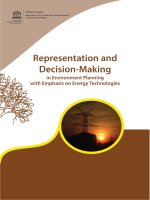
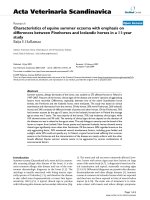
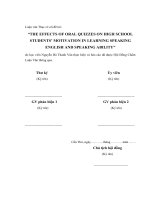
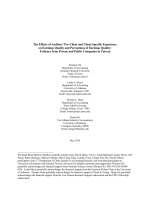
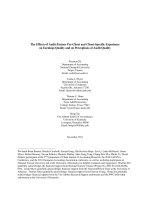
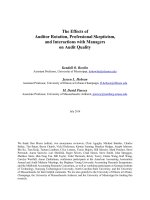
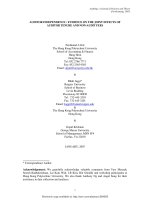
![daniels and booker - 2011 - the effects of audit firm rotation on perceived auditor independence and audit quality [mafr]](https://media.store123doc.com/images/document/2015_01/06/medium_sds1420548148.jpg)

